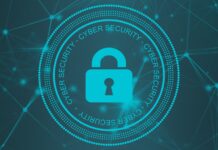Large Quantum Computers Will Break All Public Key Schemes Currently In Use
The National Institute for Standards in Technology (NIST) recently released a new report in which it raised an alarm on the insecurity of public-key cryptosystems currently in use. According to the NIST report, this would seriously compromise the confidentiality and integrity of digital communications on the Internet and elsewhere.
The goal of post-quantum cryptography (also called quantum-resistant cryptography) is to develop cryptographic systems that are secure against both quantum and classical computers, and can interoperate with existing communications protocols and networks.
Quantum computing is based on new technology which leverages the physical properties of matter and energy to perform calculations, and NIST says quantum computers can solve the theoretic problems on which crucial communications protocols depend, rendering all public key cryptosystems based on such assumptions “impotent.”
As such, a sufficiently powerful quantum computer will put many forms of modern communication—from key exchange to encryption to digital authentication—in peril, NIST warns.
The question of when a large-scale quantum computer will be built is complicated and contentious. While in the past it was less clear that large quantum computers are a physical possibility, many scientists now believe it to be merely a significant engineering challenge. Some experts even predict that within the next 20 or so years, sufficiently large quantum computers will be built to break essentially all public key schemes currently in use. It has taken almost 20 years to deploy our modern public key cryptography infrastructure. It will take significant effort to ensure a smooth and secure migration from the current widely used cryptosystems to their quantum computing resistant counterparts. Therefore, regardless of whether we can estimate the exact time of the arrival of the quantum computing era, we must begin now to prepare our information security systems to be able to resist quantum computing. – NIST







